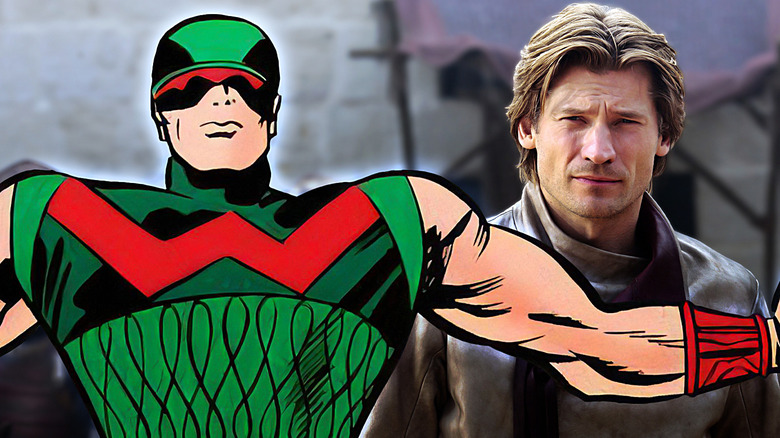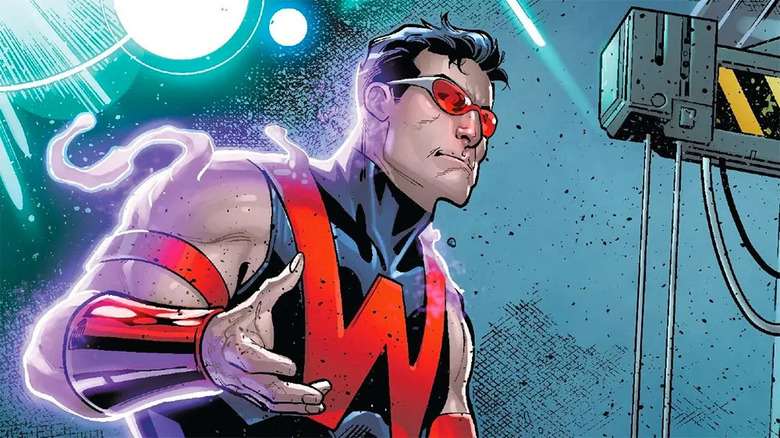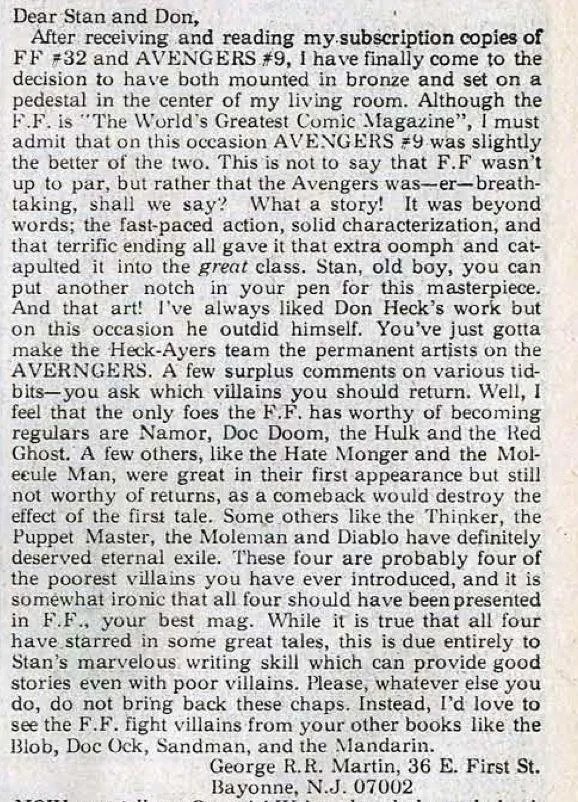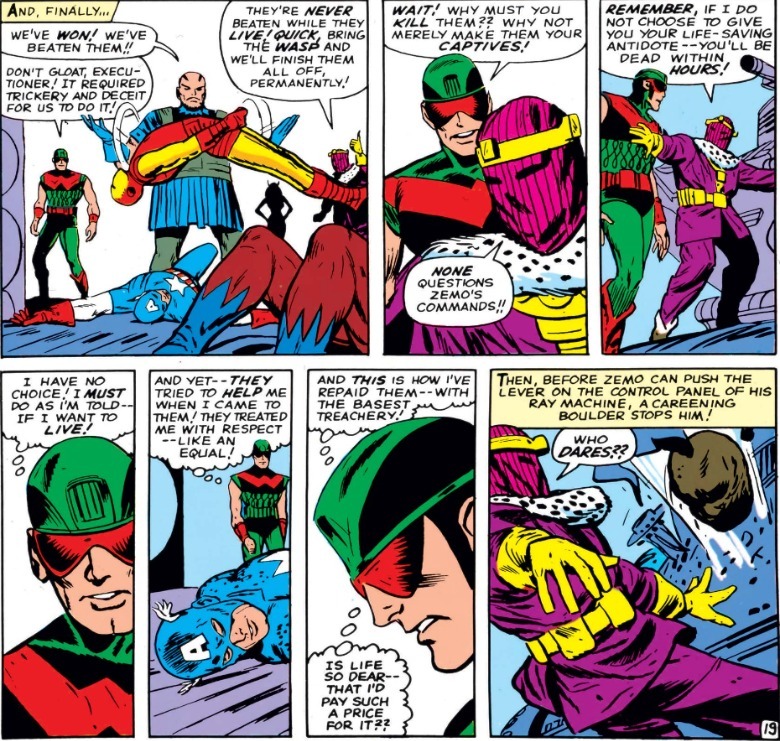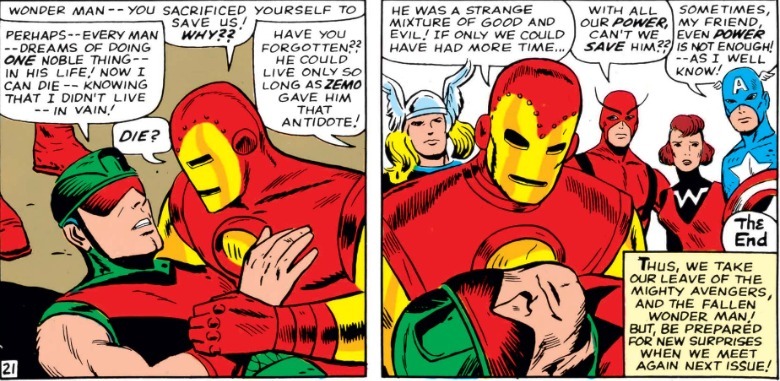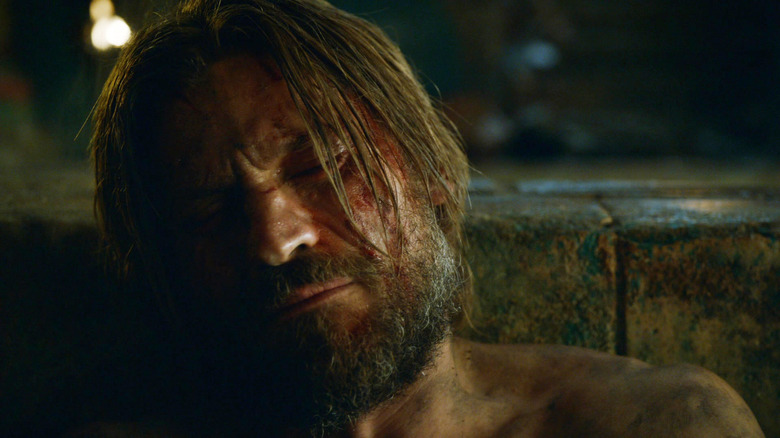The Marvel Comic That Profoundly Inspired Game Of Thrones Author George R.R. Martin
"A Song of Ice and Fire" author George R. R. Martin is most often compared to Middle-earth creator J. R. R. Tolkien, and he accepts the comparison. A lifetime fan of "The Lord of the Rings," Martin has often repeated some specific writing lessons the story taught him. Gandalf's death by Balrog made him realize readers should fear for characters' lives and the way to make them do so is with an unexpected death or two. Thus, Martin admittedly isn't a fan of the resurrected Gandalf the White. (Lady Stoneheart who?) The Scouring of the Shire, when the Hobbits find their home invaded by orcs after their main quest is over, similarly taught Martin that life — and evil — still go on after fairy tale happy endings.
Reducing Martin to just "The American Tolkien" is off-base though. His writing pulls from many other influences, from Shakespeare to Jack Vance to Sir Walter Scott to Stan Lee & Jack Kirby. As a geek born in the late '40s, Martin was at a prime age to get hooked on Marvel Comics. In a 2011 interview with the "Sound of Young America" podcast, Martin called the 1960s Marvel superheroes "really revolutionary," compared to the rote and "circular" storytelling happening at DC Comics:
"Stan Lee introduced the whole concept of characterization to comic books, and conflict, and maybe even a touch of gray in some of the characters — and boy, looking back on it now, it was probably a bigger influence on my own work than I could've dreamed."
After Lee's passing in 2018, Martin eulogized him with a (not a) blog post and reiterated the Marvel writer/editor's impact on him. "These characters had personalities. Quirks, flaws, tempers. The heroes were not all good, the villains were not all bad. The stories had twists and turns, I could not tell where they were going. Sometimes good guys fought other good guys. The characters grew and changed [...]"
The third major lesson that Martin took for his work — that people are neither wholly good or evil — comes from Marvel Comics, not "Lord of the Rings." One issue in particular exemplifies this: "Avengers" #9 by Lee and artist Don Heck.
Wonder Man's Marvel Comics origin story, explained
The teenage Martin was such a big Marvel fan that he repeatedly wrote fan letters, some of which got published. "Avengers" #12 even included a letter of Martin raving about "Fantastic Four" #32 and "Avengers" #9:
These unearthed letters are one of the key reasons that Marvel's influence on Martin, and this particular story, remains widely discussed. Even so, the fact he was inspired to write the letter at all, and his effusive praise, suggests it's not just retroactively assigning influence.
Here's what happens in the story. The Masters of Evil (Baron Zemo, Amora the Enchantress, and Skurge the Executioner) hatch a new scheme to destroy the Avengers from the inside. They pick Simon Williams, an inventor put out of business by Tony Stark who embezzled from his company to stay afloat. At Zemo's base, Williams is dosed in "ionic rays" that give him super strength. But they will also kill him in one week unless Zemo gives him an antidote. So, Williams is forced to play along with the Masters' plan: pose as costumed superhero "Wonder Man," join the Avengers, and lead the heroes to their doom. But spending time among the Avengers convinces Wonder Man of their goodness, so he helps them defeat Zemo and dies from the ionic ray poisoning. (Like Gandalf, Wonder Man eventually came back and has a long history as an Avengers mainstay.)
A villain who sees the error of his ways and dies to save the heroes is a recurring story beat in Lee's Marvel comics. In "Fantastic Four" #51 — "This Man... This Monster!" — an unnamed, twisted scientist swaps places with the Thing to destroy Reed Richards, only to give his life to save Mr. Fantastic instead. In "X-Men" #16, Sentinel creator Bolivar Trask even dies to destroy the rogue mutant-hunting robots he built.
While discussing Wonder Man's death with "The Sound of Young America," Martin recalled: "It was very heart wrenching [...] I guess I've responded to tragic doomed characters even since high school." At this point, you might be thinking the main lesson Martin learned was the shock value of killing off unexpected characters (e.g. Ned Stark). Martin didn't remember Wonder Man just because he died, though. Speaking to MTV News at WorldCon 2012, Martin explained: "I loved the fact that he was a villain pretending to be a hero [who] became a real hero at the end. That kind of reversal, dealing with themes of betrayal and redemption [...] and you look at my work and you see the fingerprints of something like this all over it."
Indeed you do. Martin doesn't kill his characters willy-nilly (well, not always), he makes you care first. Would Ned's death have been so gut wrenching if we hadn't spent a whole book/season with him as the hero first? Would the Red Wedding have hit the same way without the proper build-up? Would Jon holding a dying Ygritte hurt as much without chapters of their doomed love story? Even more stunningly, Martin can make you care for some despicable people.
Marvel's Wonder Man taught George R. R. Martin to write complex villains
There are some truly evil people in Westeros; Tywin Lannister, Joffrey Baratheon, Ramsay Bolton and Euron Greyjoy come to mind. One character that initially seems like he could fit in there, Jaime Lannister, turns out to be much more though. Recalling how Wonder Man shocked his teenage self, Martin sets Jaime up as a simple villain for the reader to hate, and then guides him into a more selfless character.
Jaime in the first two books/seasons is a sister-f**king, kingslaying attempted child murderer. His venomous conversation with Catelyn Stark in "A Clash of Kings" is a wonderful read, but each word he spits out makes you want to strangle him as much as Cat does:
Jaime: "If there are gods, why is the world so full of pain and injustice?"
Catelyn: "Because of men like you."
Jaime: "There are no men like me. There's only me."
On a reread, though, this is the first moment that suggests there's more to Jaime: "I think it passing odd that I am loved by one for a kindness I never did, and reviled by so many for my finest act." Jaime broke his oath by slaying King Aerys Targaryen, but for noble reasons; the Mad King was plotting to burn all of King's Landing and its people. Jaime's final POV chapter in "A Storm of Swords" ends with him realizing he still has time to write his life story, nor do his past acts define who he has to be going forward:
"When he was done, more than three-quarters of his page still remained to be filled between the gold lion on the crimson shield on top and the blank white shield at the bottom. Ser Gerold Hightower had begun his history, and Ser Barristan Selmy had continued it, but the rest Jaime Lannister would need to write for himself. He could write whatever he chose, henceforth. Whatever he chose..."
The symbolism of the near-blank page is obvious, but beautiful all the same.
Or take Theon Greyjoy, another character who could be called Westeros' Wonder Man. He's a selfish, lecherous backstabber in "A Clash of Kings," one eager to redeem his honor for years of being a hostage of the Stark family. After being humbled and tortured, his arc in "A Dance With Dragons" is not only about reasserting his identity, but also building up a better man than he was before. Theon saving Jeyne Poole from their mutual captor Ramsay Bolton is as close to classic, storybook chivalry as you can get in this "Song."
Stannis Baratheon declared: "A good act does not wash out the bad, nor a bad act the good. Each should have its own reward." At first glance, this is a summation of Stannis' iron-hard views on justice, but the black-and-white still contains nuance. People are capable of doing both good and bad acts, and Martin's work is all about characters who exist in the wide gap between pure and evil. The key that opened that gap to him was Wonder Man.
